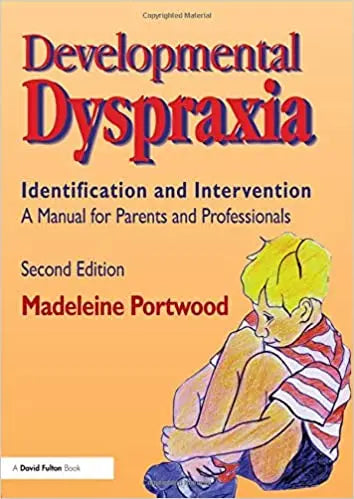David Fulton Publishers
Developmental Dyspraxia - Identification and Intervention
Developmental Dyspraxia - Identification and Intervention
SKU:BK392
Couldn't load pickup availability
We clean up after ourselves.
Ecommerce deliveries have a carbon footprint. That's why we support verified projects that remove carbon from the air.



Every delivery’s carbon footprint is calculated based on weight, shipping method, and distance traveled. We neutralize these emissions by purchasing verified carbon removal credits from groundbreaking projects. When you add a contribution to your order, 100% of that money is used to pay for additional carbon removal.



With your purchase, you’ll join a community of proactive merchants and customers dedicated to a sustainable future. Together, we've removed emissions for over 69 million deliveries and removed over 49 thousand tonnes of carbon.

We work with a network of pioneering carbon removal companies that have been vetted by the commerce platform Shopify.

Research suggests that betweeen 5 and 10 per cent iof all children are dyspraxic.
Share

Research suggests that betweeen 5 and 10 per cent iof all children are dyspraxic.
The second edition of this manual aims to give parents, teachers and health professionals the confidence and know-how to diagnose and assess dyspraxia. The text includes: background information on the neurological basis of the condition; strategies for identification, diagnosis and assessment; proven programmes of intervention which can be monitored by anyone closely involved with the child; strategies to improve curricular attainments; remediation activities to develop perceptual and motor skills; programmes to develop self-esteem; and information about where to find help.
We clean up after ourselves.
Ecommerce deliveries have a carbon footprint. That's why we support verified projects that remove carbon from the air.



Every delivery’s carbon footprint is calculated based on weight, shipping method, and distance traveled. We neutralize these emissions by purchasing verified carbon removal credits from groundbreaking projects. When you add a contribution to your order, 100% of that money is used to pay for additional carbon removal.



With your purchase, you’ll join a community of proactive merchants and customers dedicated to a sustainable future. Together, we've removed emissions for over 69 million deliveries and removed over 49 thousand tonnes of carbon.

We work with a network of pioneering carbon removal companies that have been vetted by the commerce platform Shopify.


